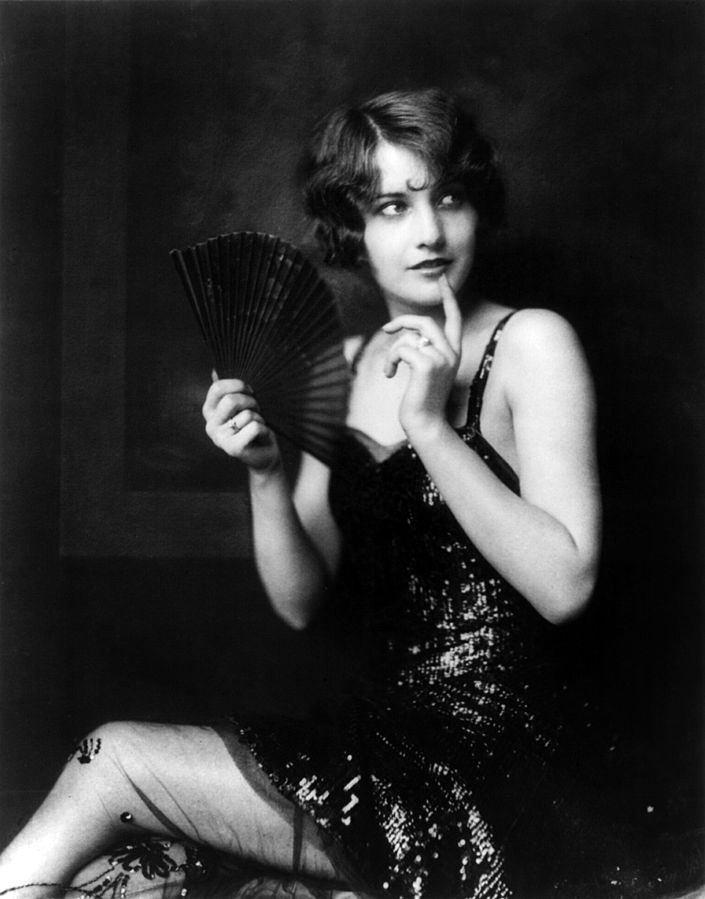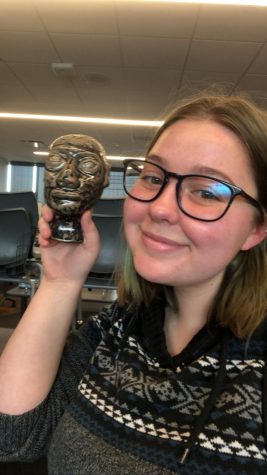20’s Flapper Culture
Photo of Barbara Stanwyck an actor and famous flapper modeling for Johnston
January 24, 2020
Because we have once again found ourselves in the “Roaring 20’s”, its only fair to learn components that made the 1920’s what they are.
The Beginning
The 1920’s began just as World War I ended, so all the countries that borrowed money from the US were paying back their debts. With this influx of money, Americans now owned forty percent of the worlds wealth while other countries went through a depression. People began to gain money fast, about a thirty five percent increase per household on average. Credit buying and buying stocks on margin became very popular. People became rich over night through the stock market. More money eventually lead to much more leisure time.
Many closely related political and social changes also affected the American way of life. Two new amendments went into government, the 18th and the 19th. The 19th granted women the right to vote also know as women’s suffrage. The 18th banned the production, transportation, and sale of alcohol in the US. While both amendments were made with the public in mind, the 18th amendment backfired. Bootlegging became a very common crime. America’s growing love for jazz, clubs, and even more drinks, lead to the creation of speakeasies. It was easier than ever to get to the city for shows because of the mass production of cars. A population boom occurred in cities as young people migrated to the thriving night life.
It is important to note, women in this period were rebelling wildly against society. During the war, women joined the work force. They performed the jobs left by the men who fought. After the men’s return, they pushed the women to once again step down and return to the doting house wife. Women did not want that. They finally started having economic and other freedoms.
The Birth of Flappers
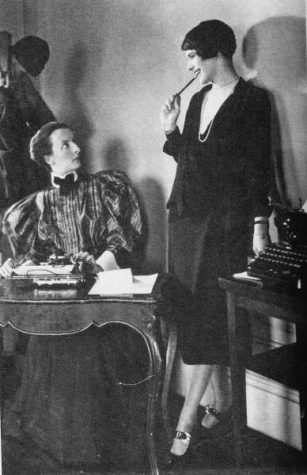
Posed photo of Lois Long (writer discussed lower down in article) as she is pretending to startle a more reserved colleague.
The usage of the word Flapper began during the war. Flappers are generally imagined as stylish young women, usually unmarried, who performed “scandalous” acts in public. These actions included but were not limited to smoking, drinking, dancing, showing skin, and generally practicing their sexual freedom, in public. Big cities loved flappers but smaller towns did not take so kindly to the newly liberated woman. When I asked Jeremiah Murray, ERHS american history teacher, he said that a lot of things contributed to the birth of flappers, “part of it is the new woman of the twenties… it the dawn of the era of women, which is a good thing”.
There is no true definition of who a flapper was because there was so much diversity in the scene. When I asked Murray why defining who a flapper was so difficult he said, “…there were different levels…(most) would stop before things got too crazy. Then there was a different section called Vamps who didn’t care about anything and would do whatever she wants no matter what”. The vast majority were simply women who after work when out with friends and let themselves be taken by the pleasures that were not given to their ancestors.
Flappers, more than anything, were a culture shock. The biggest trend in young people was rebelling against their parents. The idea of throwing propriety to the wind was terrifying to the older generations because that isn’t how they did things. That is true of every generation. The flappers just did it better than most generations.
Flapper Fashion
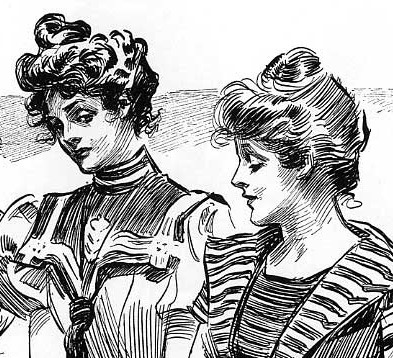
A illustration, Gibson Girls Seaside, by Charles Dana Gibson that immortalized Gibson girl fashion
Before the rise of flapper fashion, the Gibson Girl was the picture of beauty and what most women had striven for. High necklines, corsets, and perfectly put together hairstyles dominated the 1890’s to early 1900’s. No more than thirty years later, flappers in short skirts and chopped hair reinvent American beauty standards.
Dresses were typically calf length, straight and slim. Bras and lingerie took the place of corsets. Heavy makeup and short hair became all the rage; small heels finished the look. Designers like Coco Chanel and Elsa Schiaparelli began adding harsh lines to their designs. Jean Patou created swimwear and sportswear inspired by the carefree look of flappers. Madeline Vionnet even began using bias cut designs that emphasized women’s bodies in a more natural way.
Much of flappers nonrestrictive fashion changed the course of fashions history, making our current style possible.
Flappers in the Media
Advertisement began using flapper fashion and ideals to market to large audiences. The radio being more accessible to the masses helped create common culture among the masses. People began marketing to women. One of the most commonly used ads was about how using the product would draw men’s attention. Flappers also appeared regularly in movies and magazines with knock outs like Barbara Stanwyck and Louise Brooks.
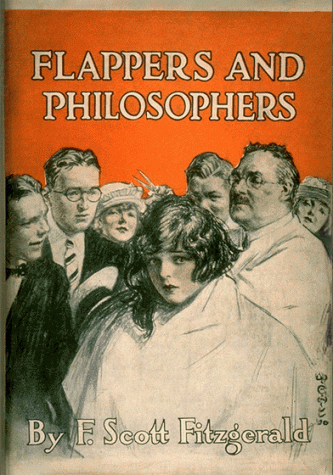
The book cover for F. Scott Fitzgerald’s book, Flappers and Philosophy, illustrated by W. E. Hill.
Many writers made it their mission to catalog and describe the wild lives of flappers. Lois Long was a writer for the New Yorker under the pseudonym Lipstick. She wrote about flappers in her columns. Many times she would write accounts of her own experiences, sitting down to write with alcohol and adrenaline still thumping in her veins from the excursion.
The most well known now is author F. Scott Fitzgerald, and his wife Zelda Fitzgerald. Scott wrote short stories, articles, and a collection of flapper stories to publish. He was seen as an expert on the lives of flappers. Zelda wrote articles about her own life and about the modern flapper lifestyle. She herself was a flapper whose hedonistic lifestyle scandalized many. Dawn Goldsmith, ERHS AP-lit teacher, told me, “Zelda, an author in her own right and who Scott called Americas first flapper, oozes from the pages of Scott’s writing”. Goldsmith continued by explain how “some of his (Scott’s) most famous lines are actually her (Zelda’s) real life utterances, including- upon giving birth to their daughter- ‘I hope its beautiful and a fool- a beautiful little fool'”. That specific quote is modified to fit into The Great Gatsby, one of Scott’s best works.
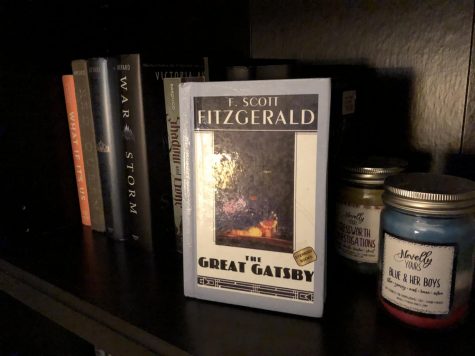
Photo of my copy of The Great Gatsby by F Scott Fitzgerald.
The End of Flappers
Unfortunately, nothing is forever. After every economic upturn, a downturn is promised. Americas wealth was lost in the stock market crash of ’29. The hedonistic lifestyle of the 20’s was simply not attainable for the public after that. The entire nation entered a new era of frugality and despair that made the frivolity of the twenties so alien that it is hard to imagine it occurred only a few years prior.
Even though the life of flapper culture was short, it changed the social climate for years to come. They helped normalize women living truly, breaking away from the molds put on them from generations past. They changed american beauty standards drastically. They wrote and told incredible stories. More than anything, they inspired so many more women to claim their freedom. They give women inspiration to do all the scandalous or frowned upon acts that “ladies are not supposed to do”. Drinking, smoking, partying, and so many more acts have always disproportionately affected women’s reputations than men. Flappers rebelled against society and helped us create a better one today.
Next time you are worried if your outfit is a little scandalous or you want to push a limit placed upon you, think “What Would a Flapper Do?”
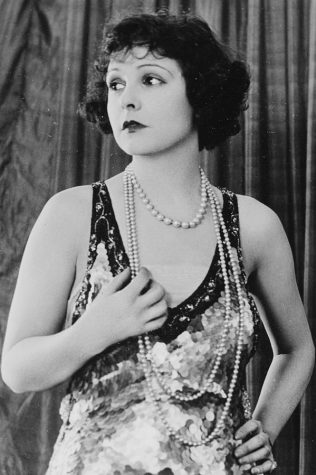
Picture of Norma Talmadge from unknown source. Talmadge was a famous actress in the early 20’s

